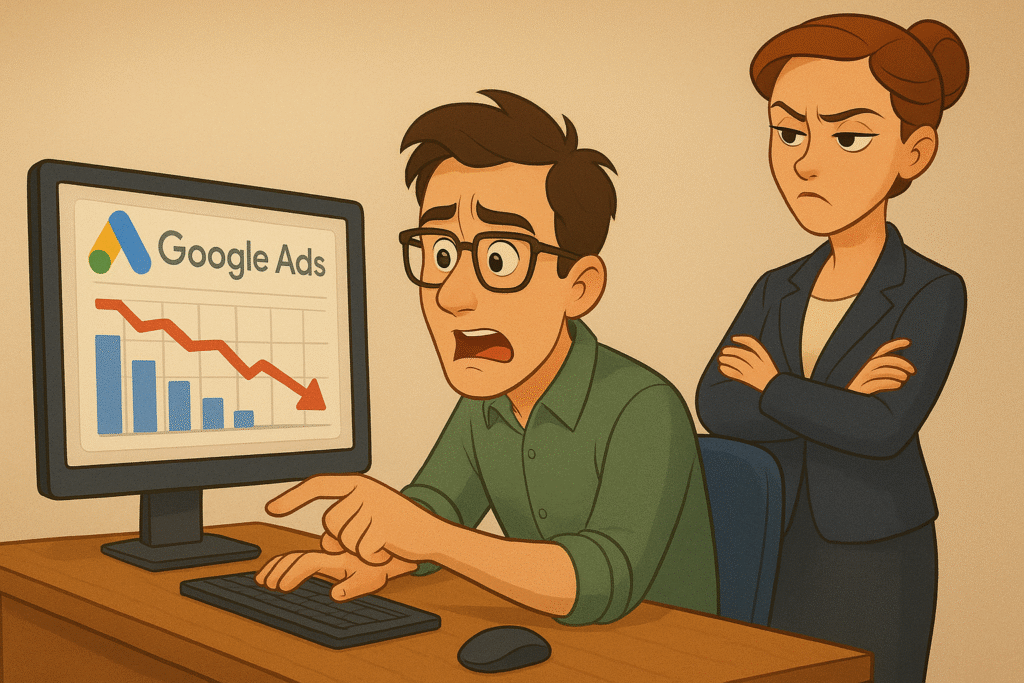
Kim from Atlanta wrote with a frustration many marketers share:
“I loved your piece about Google Ads forcing broad targeting. We’re seeing the same thing, but my boss thinks I’m just making excuses for declining performance. What alternative channels have you seen work best for products that need precise audience targeting?”
Kim, you’re not making excuses. What you’re doing is recognizing a fundamental shift in how Google operates.
The platform that once rewarded precision now penalizes it, prioritizing Google’s revenue over advertiser outcomes.
Your boss’s skepticism is understandable. Many executives still remember when Google Ads delivered exceptional ROI through exact match targeting and detailed audience controls.
They don’t realize the platform has systematically removed those capabilities to force broader, less efficient spending.
Here’s what’s working for precise targeting now:
Meta Ads (Facebook and Instagram) still offer more granular control than Google, particularly for demographic and interest-based targeting. While they’ve been forced to reduce some targeting options due to privacy changes, advertisers can still define audiences with reasonable precision and maintain control over ad placement and bidding strategies. I’m often very happy with the Return on Ad Spend (ROAS) I get using Meta ads.
LinkedIn Ads excel for B2B products where professional context matters. The targeting remains granular — job titles, company size, industries, seniority levels — and advertisers retain control over audience definitions. Cost per click is higher, but conversion rates often compensate through superior targeting precision. I’m running several of these successfully right now too.
Pinterest performs remarkably well for visual products and lifestyle categories. Their targeting based on interests, search behavior, and visual preferences creates efficient audience matching that Google’s broad algorithms can’t replicate. And, as they say, pinners are planners!
Native platforms like Taboola and Outbrain excel for content-driven products and services where educational messaging outperforms direct sales pitches. These platforms allow precise publisher selection and audience targeting while maintaining the editorial context that builds trust and engagement.
Direct partnerships with niche publications and industry websites often deliver better results than programmatic advertising. These partnerships provide editorial context and audience trust that pure ad tech cannot match. It’s fantastic what I’ve been able to negotiate with publications when there’s a relationship in place and we have an insider with actual pull.
Email list building through content marketing has become more valuable as paid advertising becomes less precise. Capturing prospects through valuable content and nurturing them through owned channels provides targeting control that platforms increasingly withhold.
In I Need That, I discuss how successful products build direct relationships with customers rather than depending entirely on algorithmic intermediaries. The companies thriving today have diversified their acquisition channels before platform dependencies became platform vulnerabilities.
Product Payoff: My preferred email tool Kit (until recently Convertkit) has grown to $29 million in annual recurring revenue primarily through content marketing and direct relationships rather than paid advertising platforms. While competitors struggled with rising Facebook and Google costs, Kit focused on creating valuable content for their target audience (online creators), building email lists, and nurturing prospects through owned channels. I love Kit’s support and community.
Their approach generated predictable customer acquisition costs and sustainable growth independent of platform algorithm changes.
Action for today: Document Google’s performance changes over the past 12 months with specific metrics — CPC increases, targeting drift, conversion rate declines. Present these alongside alternative channel test results to demonstrate that platform changes, not campaign management, are driving performance degradation.
Then propose a diversified acquisition strategy that reduces Google dependence while maintaining overall lead volume.
When the rules change, the best players adapt their strategy rather than just their tactics.
Have you successfully reduced dependence on Google Ads while maintaining acquisition performance?
Tap on that reply arrow and share which alternative channels have delivered results for your specific product category.
Or reach out to my team of product marketing specialists at Graphos Product.
